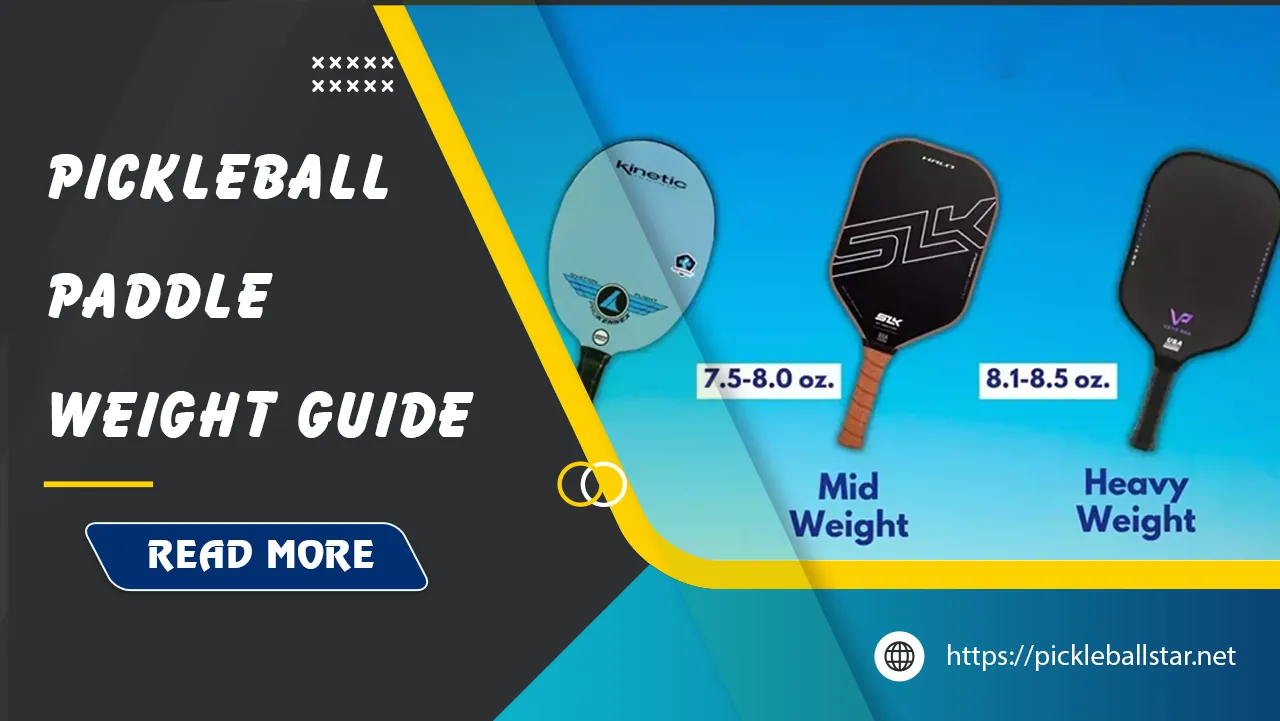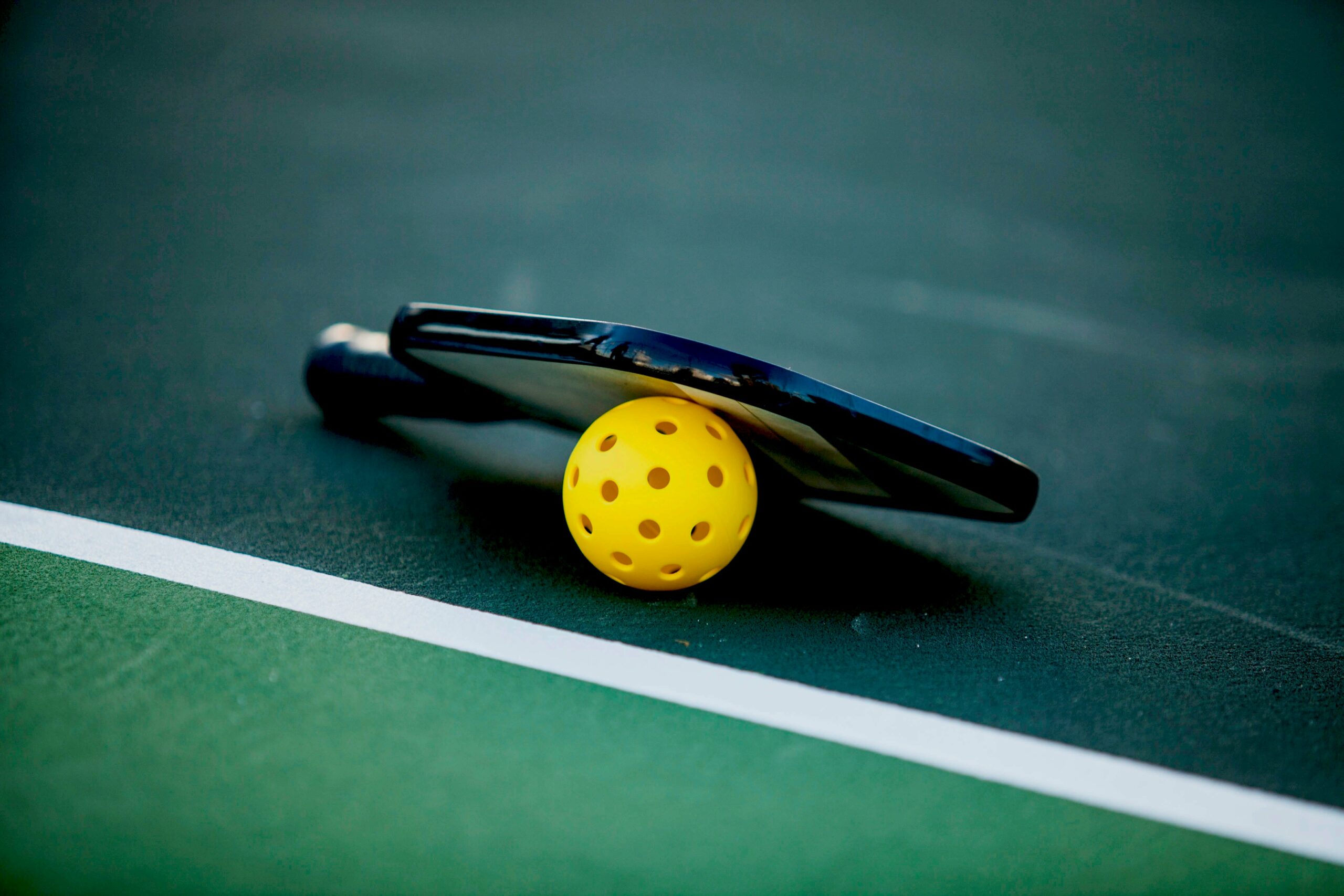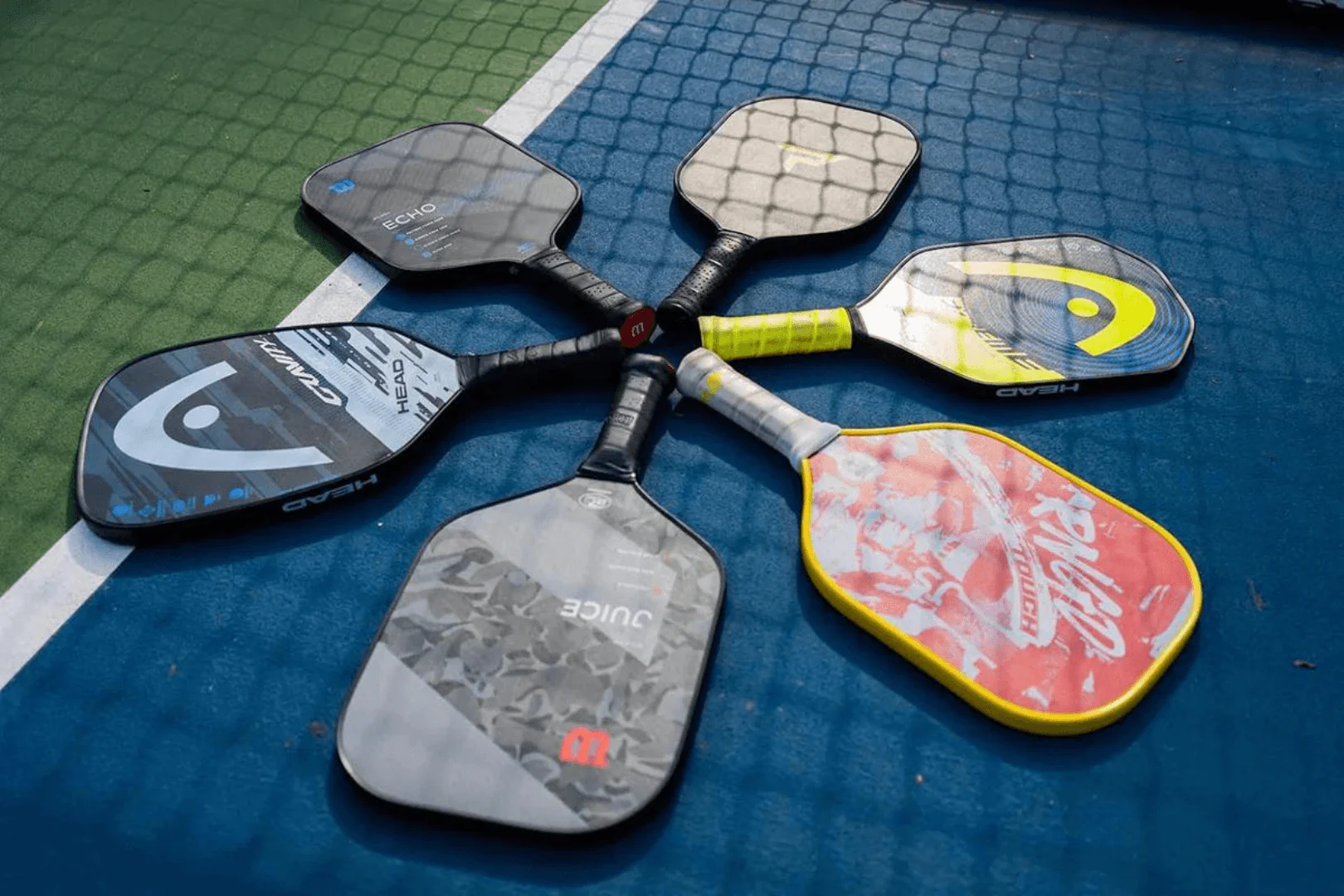Understanding Pickleball Paddle Weight: A Comprehensive Guide
Understanding pickleball paddle weight
What is pickleball paddle weight?
The term “pickleball paddle weight” refers to the overall mass of the paddle, typically measured in ounces. This seemingly simple metric holds significant sway over how a player experiences the game. A paddle’s weight can drastically influence aspects such as control, power, and comfort, making it a crucial element to consider when choosing the right equipment.

Just like a painter relies on the right brush for different strokes, pickleball players depend on the precise paddle weight to execute their game strategy effectively. Think of a light, agile racquet gliding like a dancer across the court, versus a heftier, powerful paddle like a resolute warrior delivering knockout hits. In essence, the weight of a pickleball paddle is a foundational choice that sets the tone for a player’s performance and comfort on the court.
How is pickleball paddle weight measured?
Measuring the weight of a pickleball paddle might seem straightforward, but it’s not just a matter of placing it on a scale. The official pickleball paddle specifications, as established by USA Pickleball (USAP), detail that paddle weights can range from 6.5 ounces to 14 ounces. This weight is derived from the actual materials used in the paddle, such as the core and the face, and is influenced by elements like the grip and any added tapes.
Much like how a chef might weigh ingredients to the gram to ensure the perfect recipe, paddle manufacturers and players must be exact in their weight measurements. The measurement is typically done using a digital scale to ensure accuracy, with ounces being the standard unit in the United States. Thus, a precise weight not only meets regulatory standards but also fine-tunes the player’s experience, contributing to the harmony between the athlete and their tool.
What is the average pickleball paddle weight?
The average weight of a pickleball paddle is around 8 ounces. However, paddles are broadly categorized into three main classes: lightweight, midweight, and heavyweight, each catering to different playing styles and physical needs.
- Lightweight: Paddles under 7.3 ounces. These prioritize control and agility but may lack in power.
- Midweight: Paddles between 7.3 to 8.2 ounces. These offer a balanced approach, providing both control and power.
- Heavyweight: Paddles over 8.4 ounces. Heavy paddles excel in generating power but might compromise on control and rapid maneuverability.
The average or “standard” weight, sticking close to 8 ounces, often serves as a reliable middle ground for many players. It offers a harmonious blend of power and control, making it a popular choice among both seasoned players and beginners.
Read more:
The impact of pickleball paddle weight on your game

Power and swing speed
The weight of a pickleball paddle can have a profound impact on power and swing speed, much like how different weights in a gym influence a workout routine. Light paddles, often under 7 ounces, feel feather-like and can be swung quickly, akin to a swift sword stroke. These paddles allow players to react faster and potentially deploy more spin on their shots, achieving powerful performances with less arm strain.
In contrast, heavier paddles (around 9 ounces or more) operate like the sledgehammers in a blacksmith’s arsenal. The additional mass can significantly add momentum to your swings, imparting more force upon impact. This makes it easier to send the ball flying across the court with fewer swings, ideal for power hitters aiming to dominate with hard drives. However, their increased heft could slow down swing speed and make quick reactions more challenging.
Control and maneuverability
Control and maneuverability are essential for executing precise shots and swiftly responding to the opponent’s moves. Lightweight paddles, given their reduced mass, offer superior maneuverability. These paddles are naturally easier to handle, allowing you to position for volleys and execute finesse shots with greater precision. It’s like holding a feather quill versus a large paintbrush; the lighter tool allows for more delicate, nuanced strokes.
On the flip side, heavier paddles, while offering enhanced power, can sometimes feel cumbersome. Just as a heavyweight boxer maintains brute force but sacrifices agility, a heavy paddle can make quick reactions and fine adjustments more difficult. Midweight paddles offer a balanced compromise, providing adequate maneuverability without completely sacrificing power, making them a versatile tool for varied playing styles.
Comfort and fatigue
Comfort and fatigue management during gameplay are heavily influenced by the weight of the paddle. Imagine playing with a light feather versus a stone – the former is undoubtedly less strenuous. Lightweight paddles reduce the strain on your arm and shoulder, enabling longer play sessions without excessive fatigue or discomfort. This can be particularly beneficial for beginners or players with existing joint issues.
Conversely, heavyweight paddles, while offering increased power, demand more physical strength to wield effectively. Extended use can lead to muscle fatigue and even repetitive strain injuries. Midweight paddles again strike a happy medium, allowing players to enjoy the benefits of both ends of the spectrum without overburdening any single attribute.
Choosing the right pickleball paddle weight for you

Your skill level
Selecting the right pickleball paddle involves a nuanced understanding of one’s skill level. Beginners often gravitate towards lighter paddles because these are easier to control and less tiring to use, much like training wheels on a bike providing stability. Light paddles reduce the learning curve, allowing beginners to focus on mastering the basics without feeling overwhelmed by a cumbersome tool.
As players advance, they might explore midweight options that offer a blend of control and power. These paddles help to strike a balance as players begin to refine their shots and engage in more strategic plays. For seasoned athletes, a heavier paddle can unleash their full potential, maximizing the power in their shots while maintaining an adequate level of control through their refined technique.
Your playing style
Your playing style significantly determines the most suitable paddle weight. If you are a finesse player who thrives on quick reactions and precision shots, a lightweight paddle would be akin to a maestro’s conductor’s baton, allowing for quick adjustments and exquisite accuracy.
In contrast, if you are a power player who prefers aggressive smashes and hard drives, a heavier paddle would complement your style, similar to a chisel in a sculptor’s hands, allowing you to shape the game with power and brute force. Midweight paddles serve versatile players who need to switch between power and precision seamlessly, providing a jack-of-all-trades solution.
Your physical strength and conditioning
Physical conditioning and strength are pivotal in paddle weight selection. A player’s fitness level can impact their ability to handle heavier paddles during intense, prolonged matches. Lightweight paddles serve well for players with less upper body strength or those prone to injuries, providing them with a manageable and comfortable option.
For players with greater physical strength and endurance, heavier paddles can amplify their naturally strong shots and withstand longer, rigorous play sessions. Midweight paddles offer a balanced solution for those who want to maintain adequate power without sacrificing too much control or comfort.
Adjusting pickleball paddle weight

Adding weight to your paddle
Adding weight to a pickleball paddle can be a game-changer, offering a customized feel that enhances performance. The most common method to add weight is by using lead tape, a practice akin to a tailor adjusting the fit of a suit for optimal comfort and functionality.
Popular Areas to Add Weight:
| Area | Effect |
|---|---|
| Sides | Expands the sweet spot horizontally and adds stability |
| Neck | Increases paddle stability and adds weight to the lower part |
| Top Edge | Makes the paddle more top-heavy, offering more power |
| Corners | Provides balanced weight, increasing power and the sweet spot |
However, caution is key. Adding too much weight can lead to fatigue and potential injury, so it’s advised to start small and make gradual adjustments. The objective is to find a harmonious balance that enhances your strengths without compromising comfort.
Removing weight from your paddle
On the other hand, players sometimes need to lighten their paddle to achieve better agility and control. Removing elements such as overgrips or heavy tapes can make a noticeable difference. This fine-tuning process is like fine-tuning an instrument, requiring precision and care to ensure the paddle retains its optimal balance and functionality.
When making such adjustments, it’s important to ensure that any weight removal is done incrementally and thoughtfully, as drastic changes can unexpected impact on your gameplay and the paddle’s overall durability.
Experimenting with different weights
Experimenting with different paddle weights is essential for finding the ideal setup. Start by testing paddles across the spectrum – from lightweight to heavyweight – in various playing conditions. This trial-and-error approach can be likened to a scientist conducting experiments to find the perfect formula; the goal is to identify which paddle weight harmonizes best with your personal playing style, skill level, and physical capabilities.
Documenting results and noting how changes affect your control, power, comfort, and fatigue can offer valuable insights. Over time, this meticulous approach will guide you towards the perfect paddle weight that optimizes your on-court performance.
Tips for optimizing pickleball paddle weight

Start small and gradually increase weight
When optimizing your pickleball paddle weight, a gradual approach is recommended. Think of it as strength training for your muscles; you wouldn’t lift heavy weights without proper conditioning. Incrementally increasing paddle weight allows your body to adapt, reducing the risk of strain or fatigue.
Practical Steps:
- Begin with a baseline paddle that feels comfortable.
- Incrementally add weight using tapes or grips.
- Practice regularly to adjust to the new weight.
Consider your playing environment
Your playing environment can also influence paddle weight selection. For instance, outdoor play may benefit from heavier paddles due to wind resistance, much like choosing sturdier sails for a boat in rough waters. Conversely, indoor settings might favor lighter paddles for quicker maneuverability.
Considerations:
- Outdoor Play: Opt for heavier paddles to counteract wind.
- Indoor Play: Lighter paddles for agility and speed.
- Playing Surface: Consider how different surfaces impact paddle effectiveness.
Listen to your body
Above all, listening to your body is paramount. Much like a musician senses the strain in their fingers from overplaying, players must be attuned to signs of fatigue or discomfort. If a particular paddle weight causes persistent strain or discomfort, it may be wise to reconsider its suitability.
Practical Tips:
- Pay attention to muscle fatigue and joint discomfort.
- Take breaks and practice proper form to avoid injury.
- Adjust weight based on physical feedback during and after play.
Conclusion: finding your perfect paddle weight
In conclusion, the journey to finding your perfect pickleball paddle weight is a blend of self-discovery, meticulous trial, and personal preference. It’s not just about choosing heavy or light, but about what aligns best with your unique playing style, skill level, and physical conditioning. From the novice seeking control and agility in lightweight paddles to the seasoned player harnessing the brute power of heavier options, there is no one-size-fits-all solution. Each player’s path is unique, much like an artist crafting a masterpiece – through patience, experimentation, and a keen understanding of one’s own abilities and needs. So take your time, explore the myriad of paddle weights, and let your confidence soar as you find the ideal paddle weight that transforms your game to new heights. Ultimately, your perfect paddle weight is the one that feels like an extension of your arm, allowing you to play with comfort, power, and precision.
